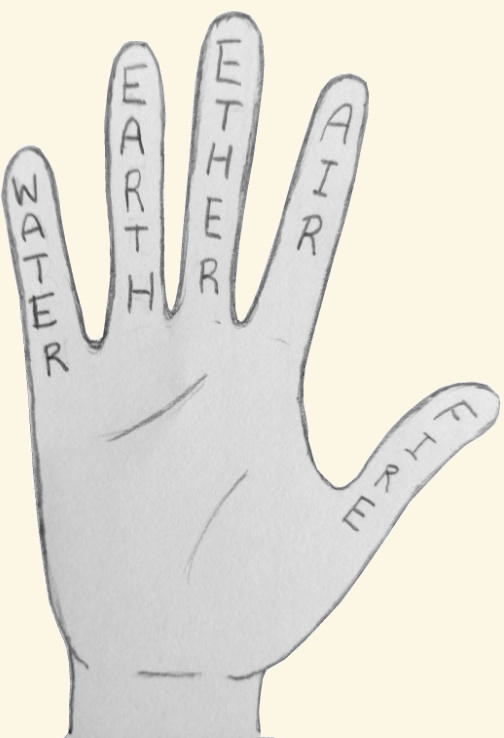Contents
- What is hasta mudra
- Mudra – Mapping of fingers and elements
- Mudra – Simple laws to increase, decrease or balance the five elements
- Classification of hasta mudras
What is hasta mudra?
Hasta means hand. This category of mudras uses various positions of hands and fingers to invoke certain moods, and emotions or to direct energy to different chakras/ energetic centers in the body.
From an ayurvedic perspective, the hasta mudras can also be used to balance, increase or decrease the tattvas (the five elements) and can work on the doshas (imbalances/faults of the five elements in the body).
Mudra – Mapping of fingers and elements
We are made of the five elements earth, water, fire, air, and ether. In Yoga and Ayurveda, each of the fingers has the characteristics of one of the elements and by doing certain gestures/positions of the fingers the elements can be increased, decreased, or balanced. See the figure below to see the mapping of the elements and the fingers.

| Fingers | Elements |
|---|---|
| Ring finger | Earth |
| Little finger | Water |
| Thumb | Fire |
| Index finger | Air |
| Middle finger | Ether |
Mudra – Simple laws to increase, decrease or balance the five elements
- To balance any element, join the tip of the corresponding finger with the tip of the thumb.
- To increase any element, the tip of the thumb is pressed at the base of the corresponding finger.
- To decrease any element, the corresponding finger is folded at the base of the thumb, and generally, the back of the finger is pressed by the thumb.
Classification of Hasta mudras
- Tattva mudras – These are mudras to increase, decrease or balance the five elements (earth, water, fire, air, and ether).
- Panch vayu/ vata mudras – The ayurvedic dosha vata (or vayu) is subdivided into five parts which are prana, apana, samana, udana, and vyana. The panch vayu mudras consist of five different mudras to balance the individual vayu’s/ vata.
- Prana mudra
- Apana mudra
- Samana mudra
- Udana mudra
- Vyana mudra
- Chakra hasta mudras– These consist of hasta mudras which work on chakras or energetic centers in the body. There could be multiple mudras that work on different aspects of a particular chakra.
- Muladhara (Root) chakra mudras
- Swadisthana (sacral) chakra mudras
- Manipura (Solar plexus) chakra mudras
- Anahata (heart) chakra mudras
- Vishuddhi (throat) chakra mudras
- Agya (third eye) chakra mudras
- Some other common hasta mudras– Mudras are a huge area to explore. There are many mudras some of which are documented and some which are passed down in tradition. We have mentioned above some of the most commonly used ones but there are many others that are used by practitioners from different traditions and might not be known to common people. Some of the other common mudras are mentioned below.
- Anjali mudra
- Vishnu mudra
- Kuber mudra
- Sanjeevini mudra
- Linga mudra